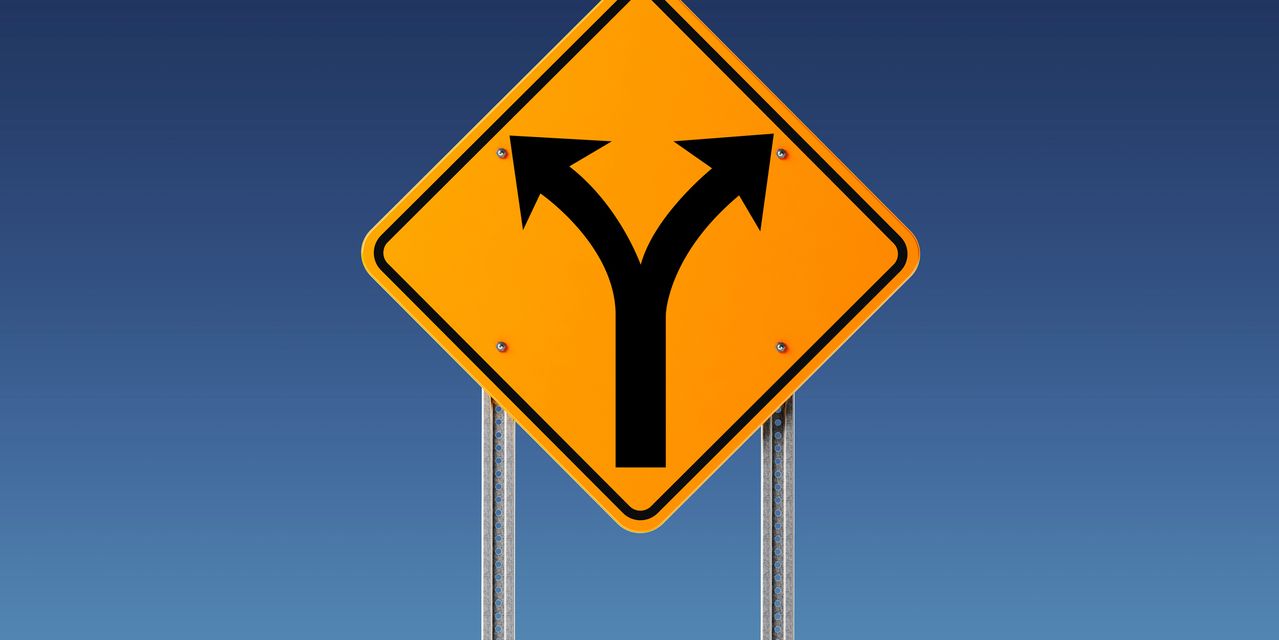Inflation views appear to have diverged recently, with consumers in a preliminary survey expecting a rise in the cost of living while a markets-based measure is pointing to a decline.
The five-year breakeven inflation rate in the U.S. closed at a 28-month low of 2.11% on Friday, said Deutsche Bank’s Jim Reid in an emailed research note Monday. That suggests that markets expect inflation to be around the Federal Reserve’s 2% target on average over the next five years “with no after effects from the last 2-3 years.”
“Even in the ultra-low inflation era pre-Covid we saw slightly higher numbers for a period in 2018,” Reid wrote of five-year breakevens.
Inflation surged during the COVID-19 pandemic and remains high, even after it has fallen from its 2022 peak. A University of Michigan survey, released on Friday, showed consumer inflation expectations for the next five years rose to 3.2% in May based on preliminary findings, from 3% in April, for the highest reading since 2011.
“For now though, should we take comfort from the market pricing in well behaved inflation or worry about what consumers are saying?” said Reid. The chart below highlights the divergence between consumers’ long-term U.S. inflation expectations and what the market is anticipating based on the five-year breakeven rate.
The University of Michigan’s preliminary five-year to 10-year inflation expectation series from consumers “saw a two-tenths spike to 3.2%, a number last seen in 2011 and not exceeded since July 2008,” said Reid.
“If you believed markets at the end of 2020 (even as the vaccine rollout was beginning), then inflation was going to be beneath target over the next 5 years and the Fed weren’t going to hike rates at all,” said Reid. “So it’s clear they’re hardly infallible.”
Last year the Fed began aggressively hiking interest rates in an effort to tame soaring inflation. The cost of living in the U.S., as measured by the consumer-price index, increased at a rate running as high as 9.1% in June 2022. That was the highest in about four decades.
As recently as April the year-over-year rate of inflation eased to 4.9%, according to headline data from the consumer-price index.
Read: U.S. consumer price inflation below 5% for first time in two years
“Consumers aren’t paid to follow inflation in the same way” as market professionals, “but their views are crucial since they help form broader expectations as workers bargain for wages and firms set their prices,” said Reid. “So the longer core inflation stays sticky, as it has done for several months, the more risk there is.”
So-called core inflation, which excludes energy and food prices, rose at a 5.5% rate in the 12 months through April, down from 5.6% in March, according to data from the consumer-price index.
As for the University of Michigan’s preliminary reading of consumers’ inflation expectations, “this series has a habit of being downgraded in the final reading so we need to wait for later in the month to see if that pattern returns,” said Reid.
In early May, the Fed hiked interest rates for a 10th straight time, raising its benchmark rate by a quarter percentage point to a target range of 5% to 5.25%.
Some investors have been anticipating that the central bank may pause its rate hikes at its next policy meeting, and potentially cut them later in the year. The Fed has pushed back on the notion of rate cuts in 2023.
Meanwhile, the yield on the two-year Treasury note has been trading below the Fed’s policy rate. On Monday afternoon, two-year Treasury yields
TMUBMUSD02Y,
was up about two basis points at around 4%, FactSet data show, at last check.
Read the full article here


